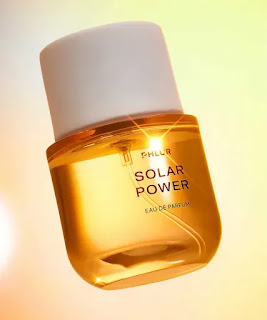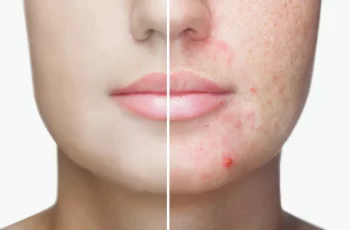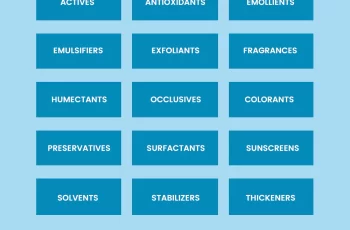
Aging. It’s a question every skin type asks themselves during their skincare journey. Not only because we all age, but because we’re all subject to various forms of damage (sun, pollution, screen time, etc.) that can lead to premature wrinkles, irritation, crow’s feet, and sagging skin.
Whether you’re looking to focus on existing signs of aging or prevent premature ones, you deserve products that condition, soften, and protect your skin from head to toe.
But which comes first: retinol or eye cream? How often should you exfoliate to reduce age spots? All of these questions and more are answered in this comprehensive morning and night skincare routine for aging (and prematurely aging) skin.
Morning Skincare Routine.
Step 1: Barrier Strengthening Cleanser (Daily): Every skincare routine should start with a deep cleanse.
If you’re concerned about aging skin, however, you need a soap-free, pH-balanced face cleanser that strengthens the moisture barrier for soft, even-toned, youthful-looking skin. Our product is enriched with provitamin B5
Antioxidant cleanser effectively removes makeup residue, dirt, and other pollutants.
Step 2: Collagen Mask (2x/week): Collagen is the most abundant protein in our skin and is key to skin plumpness and elasticity. However, over time, our collagen levels can decline, which can lead to sagging skin and a tired complexion.
Use a collagen-rich, hydrating, plumping mask a few times a week. (Note: While collagen is typically derived from animals, ours is plant-based.) The formula also contains rosehip seed oil to smooth fine lines.
Step 3: Peptide Eye Cream (optional): If under-eye bags and tired eyes look familiar, apply a pea-sized amount of eye cream while your serum is absorbing.
Look for a solution with peptides (like Zero Gravity) to hydrate and strengthen the eye area. You’ll also immediately notice brighter skin thanks to ethically sourced mica.
Step 4: Moisturizer with Vitamin E (daily): Did you know? As skin ages, it loses moisture, so staying hydrated is more important than ever. For an added benefit for aging skin, follow up with a moisturizer that contains vitamin E.
An antioxidant, it helps neutralize harmful free radicals while nourishing the skin.
Step 5: Broad-spectrum sunscreen (daily): Every skin type needs sun protection, but if you have fine lines and age spots, don’t skip this step.
Fact: 90% of skin aging is not due to age, but to external damage—like the sun. Make sure you use a sunscreen with an FDA-recommended SPF of at least 35. You’ll get bonus points, though, if you use a broad-spectrum sunscreen like Guards Up, which also protects against blue light and pollution.
Afternoon skin-care routine.
Step 1: Barrier-enhancing cleanser (evening). Cleanse skin again to prepare it for your afternoon routine. You may also consider double-cleansing with an oil-based cleanser, like the Cleansing Balm, to thoroughly remove makeup and sunscreen residue.
Step 2: Skin Smoothing Tool (once a week): The rate of skin cell turnover slows as we age, which means it takes longer for dead skin cells to float to the surface and slough off.
This can not only lead to a dull complexion, but also permanent age spots. Exfoliate once a week with an at-home exfoliating tool to give your skin a radiant glow. It also removes layers of dead skin cells and facial hair for an instantly smoother complexion.
Step 3: Retinol Serum (4 times a week): That slow cell turnover we just mentioned? Retinol helps speed it up. On evenings when you’re not exfoliating, apply 2-3 pumps of our gentle retinol serum to refine, firm, and smooth fine lines and wrinkles. Don’t forget your neck and décolleté.
Step 4: Retinol Eye Balm (evenings): Retinol also deserves a spot in your eye care routine, as it helps tighten the eye area and soften crow’s feet.
Since skin loses moisture while you sleep, look for an eye cream or ointment that contains both retinol and moisturizing ingredients, like black currant seed oil in our Advanced Retinoid Eye Balm.
Step 5: Leave-On Exfoliation* (Twice a Week): Most skin types benefit from exfoliating up to 3 times a week to combat age spots and uneven skin texture. Chemical peels with a gentle nighttime facial
blend of AHAs like lactic acid and vitamin E repair and regenerate skin without irritation.
irritation.
Step 6: Advanced Night Cream (Evening). All skincare routines need a moisturizer, but if you’re concerned about aging skin, it’s time to add a night cream to your evening routine. Night creams are typically thicker to prevent moisture loss
reduction and deliver repairing ingredients to skin at the same time.
Advanced Night Cream contains a blend of fermented purple tea and green coffee that not only moisturizes, but also reduces rough texture and softens wrinkles.
Step 7: Antioxidant Oil (optional): The key to preventing premature damage is a daily intake of plenty of antioxidants, which neutralize harmful free radicals that cause premature aging.
Apply a few drops of Antioxidant Serum Oil to skin after (or before, if you prefer) your night cream for extra moisture and protection.
Step 8: Retinol Body Lotion (Nighttime) Signs of aging skin can also appear on your arms, legs, and butt. Add a retinol body lotion to your routine to repair sagging, wrinkled skin, soften skin texture, and even out skin tone.
Do you have dry skin? How to use moisturizer, essential oils, and other ingredients to prevent dryness and dehydration.


